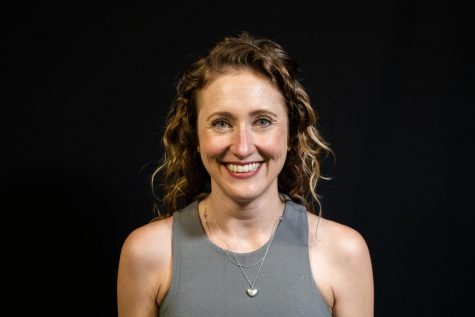In the 25 minutes between an email that alerted Santa Rosa Junior College to a “subject with a gun on the Santa Rosa campus” and the district police’s issuance of an all-clear, students, faculty and staff at SRJC struggled with what to do to stay safe.
A female student called police at approximately 2:15 p.m. Thursday, Jan. 17 to report an armed relative was on campus “coming to kill her,” according to an email from SRJC President Frank Chong. Two minutes later SRJC students, faculty and staff received an email informing them about a subject with a gun in Analy Hall. Recipients were instructed to “avoid the area.”
The report was later proven false, but that did not assuage the fears of faculty and staff who have lodged for years what one instructor calls a “chilling” complaint: the JC is unprepared for an active shooter.
Solen Sanli Vasquez was teaching a sociology class in the Santa Rosa campus’s Newman Auditorium when a student notified her of the alert to “avoid the area” around Analy Hall. Since there wasn’t additional instruction given, some students immediately packed their backpacks intending to flee campus while others voted for her to keep teaching.
“A specific ‘shelter in place’ would have sufficed in informing us the safest mode of action,” Sanli Vasquez said the next day in an email addressed to SRJC President Frank Chong but sent to the campus-wide staff distribution list. “Please remember people don’t function well under duress. It took me a while to figure out [sheltering in place] was the safest possible action.”
In fact, it was Sanli Vasquez’s teaching assistant who made the suggestion they stay put, and she agreed, but those same formal instructions did not come until 25 minutes later when she called the District Police emergency line to ask whether it was safe to dismiss her class at the end of the session.
“A room full of students were looking at me, their instructor, for guidance and leadership,” reads Sanli Vasquez’s email to Chong. “I write this to plead for resources so I can keep myself and my students safe, in case of a real threat to safety.”
SRJC Police Chief Robert Brownlee and SRJC District and Community Relations Director Erin Bricker both pointed to a new committee that Brownlee said will “standardize the [alert] language and train people on it” so public safety officials can communicate more clearly with the community.
Bricker said they’re creating a “very clear list of definitions of words to use in these situations so there’s no confusion about what is ‘shelter in place,’ what is a ‘lockdown,’” she said. “I can understand how that would create confusion.”
Brownlee stressed a need for adaptability and patience, though, regardless of the instruction given because emergency situations evolve rapidly and law enforcement must ensure they are providing accurate information.
“A ‘subject with a gun’ and an ‘active shooter’ are two entirely different events,” he said, noting that in some situations “shelter in place” would be the wrong advice. “If we put out a message that an active shooter is in the southern area of campus, then everybody in the north should be getting the heck off campus as far and as quickly as possible.”
Instructor Emily Schmidt of the philosophy, humanities and religion department was grateful not to be at her desk on the Santa Rosa campus when the alert pinged her cell phone.
Her office door is one of many on campus that can’t lock from the inside.
Schmidt’s focus is — and has been for years — the Santa Rosa campus’s physical vulnerabilities. She also emailed Chong, in a less plaintive and more demanding fashion.
“I want dates. On what date will my office doorknob and lock be replaced?” she asked in email sent Friday to the same all-staff distribution list.
She cut to the core of the problem for many faculty.
“I’ve written to you about this…after the Umpqua Community College shooting in 2015, the UCLA shooting in 2016 and the [Marjory Stoneman Douglas] High shooting in 2018,” Schmidt said. “That’s a lot of years with no action.”
President Chong said he understands her frustration and is working with district police, the information technology department and the environmental health and safety department to improve emergency preparedness.
Chong was on the Petaluma campus when he received the first alert; he drove straight to the Santa Rosa campus and headed to Analy Hall where he met with Kerry Loewen, dean of arts and humanities, the department that calls Analy home.
“People were — rightfully so — shaken up by the incident,” Chong said. “Thank God it wasn’t real, but, still, when you’re in the moment, it’s very traumatic. We’re trying to provide whatever support services we can.”
However, additional emails between staff, Chong and Brenda Flyswithhawks, an Academic Senate representative and chair of the psychology and behavioral sciences department, prove that improvements like locks, while welcome, will not be enough to make faculty and staff feel confident in the JC’s emergency plan.
“Those were some really strange, difficult, awkward 25 minutes — and of course anxiety-ridden,” Sanli Vasquez said of the time she stood in front of her 150 students, unsure how best to protect them. “I realized I was woefully unequipped to keep myself and my students safe.”




